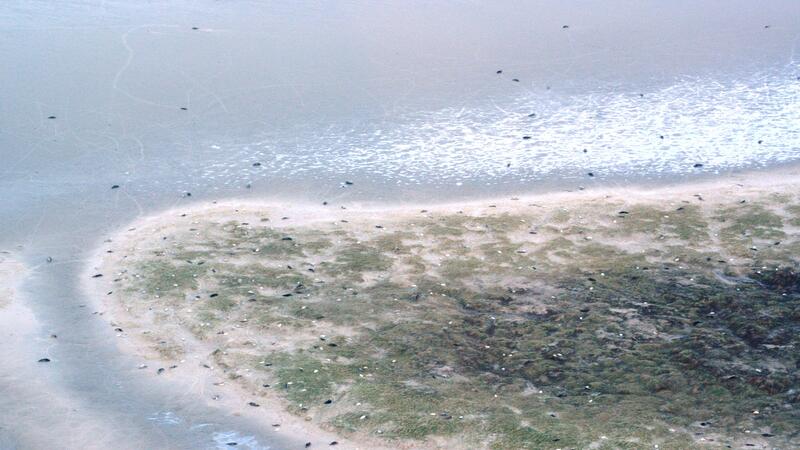Grey seal population in the Wadden Sea shows more than ten years of growth

With a 13-percent increase of counted individuals since 2017 and a steady growth for more than ten years, the grey seal has re-established a stable stock in the Wadden Sea area. In total, 6,144 adult grey seals were observed in Danish, Dutch and German waters. These are the main findings of the report “TSEG grey seal surveys in the Wadden Sea and Helgoland in 2017-2018”, published by the Trilateral Seal Expert Group (TSEG) of the Trilateral Wadden Sea Cooperation.
“The recolonisation of the grey seal to the Wadden Sea since the mid-20th century is a success story of trilateral environmental protection,” states Sascha Klöpper, Deputy Executive Secretary of the Common Wadden Sea Secretariat (CWSS): “This year Denmark, Germany and the Netherlands celebrate four decades of cooperation on the protection of the Wadden Sea and its inhabitants, such as the grey and the harbour seal. Due to these combined efforts, North Sea grey seals could find a safe habitat in the Wadden Sea area to establish a resident subpopulation, influenced by a regular exchange with animals from UK waters.”
In order to observe both adult grey seals and pups, the TSEG conducts annual trilateral counts. Total numbers of grey seals are generally counted during the moulting season, as they spend substantially more time on land during that period. During the 2018 moult, 228 adult seals (+3% compared to 2017) were observed in Denmark, 188 (+33%) in Schleswig-Holstein and 4,565 (+13%) in the Dutch Wadden Sea. With a 27%-increase (780 individuals) compared to 2017 the population found at Helgoland seem to have stabilised after last year’s drop (-17%). A similar effect might explain the 9%-drop (383) in Lower Saxony/Hamburg following very high numbers in the year before (+40%). In total, the monitored adult population increased by almost 13% to 6,144 counted individuals.
Newborns are monitored during pupping season in the winter months. In the 2017-2018 season 1,377 pups were recorded in the Wadden Sea and Helgoland with an increase of 8%. With the Wadden Sea’s grey seal breeding centred in the Netherlands, the majority of pups was born in the Dutch Wadden Sea, with an increase of 3% (821). In Lower Saxony/Hamburg 15% more pups (228) were counted compared to the previous season. Helgoland accounted for 322 pups (+12%) and six newborn grey seals were observed in Schleswig-Holstein. In Denmark no pups were recorded. Later observations showed at least a single pup born in Danish waters. The TSEG states that the number of pups is indicating a growing breeding population of grey seals in the Wadden Sea, with a moderate expansion of the population to the East and North.
Grey seals are the largest predators along the Wadden Sea coast and, like harbour seals, they are one of the iconic species of the region. In former times grey seals were frequently observed in the Wadden Sea until they disappeared most probably after excessive hunting practices. They re-emerged in the second half of the 20th century, traveling from UK waters. Part of the Trilateral Wadden Sea Cooperation, the Trilateral Seal Expert Group (TSEG) coordinates the counts and harmonizes the data from across the Wadden Sea region. The most numerous seal species in the Wadden Sea, the Harbour seal, is specially protected under the Agreement on the Conservation of Seals in the Wadden Sea (WSSA) concluded under the auspices of the UN Convention on the Conservation of Migratory Species of Wild Animals (CMS). Although the WSSA does not officially cover the grey seal, the species benefits from the agreement’s protection measures. CWSS acts as the secretariat of WSSA.
